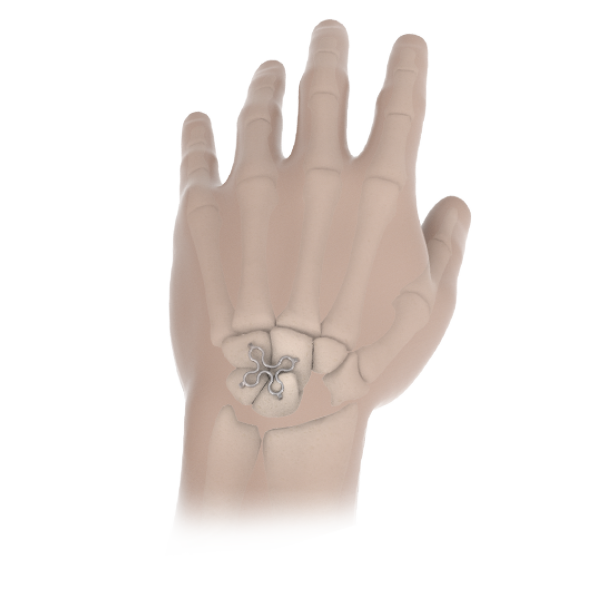
Wrist Arthritis
Understanding Wrist Arthritis
The main two types of arthritis in the wrist are osteoarthritis and rheumatoid arthritis.
Osteoarthritis (OA) is the most common type of arthritis and is also known as degenerative arthritis. OA usually develops slowly over several years. It occurs when there is a systematic loss of cushioning cartilage in the joints and the bones in the joint rub against one another. This can be very painful and reduce movement drastically in the joint.
Rheumatoid Arthritis (RA) is an autoimmune disease that causes chronic inflammation of the joints. A typical joint in the body is made up of bones that move against each other. These two bones are held together by ligaments and a sheath (called a capsule) that surrounds the entire joint. The inner lining of the capsule is called the synovium. In rheumatoid arthritis, the synovium of the joint becomes inflamed and enlarged so that it erodes the neighboring bones, ligaments, and cartilage. The end result is damaged and painful joint surfaces.
Arthritis forms in the wrist from multiple causes, but most commonly due to either a bad sprain or a fractured scaphoid that doesn’t heal properly. It will weaken your wrist and you will have difficulty bearing weight across the wrist.
Symptoms
Some first signs of wrist arthritis are:
- Difficulty bearing weight on wrist
- Pain in the wrist
- Progressive weakness of the wrist
- Stiffness in the wrist
These symptoms may make it difficult to complete simple daily tasks such as opening a jar or holding a coffee cup.
Treatments
If diagnosed with wrist arthritis your doctor would typically start with conservative, non-surgical treatments that include:
- NSAIDS
- Wrist splinting
- Corticosteroid injections
When non-surgical treatments are no longer effective, your doctor may recommend surgery. Surgical options include:
Joint replacement: This is where a portion of the damaged bone is removed and replaced with a metal or plastic implant.
Removal of arthritic bone: This procedure, referred to as a Proximal Row Carpectomy or PRC, involves the removal of the scaphoid, lunate and triquetral bones, eliminating the arthritic surfaces. Potential problems include shortening of the wrist and loss of grip strength.
Joint fusion: The arthritic joints within the wrist are fused together, eliminating the bone on bone contact that causes pain. This does affect the flexibility of your wrist somewhat, but maintains wrist length and grip strength.
Fusion Options: There are multiple options for fusions within the wrist. The procedure best suited for you will be determined by which of your joints are arthritic, the extent of the damage, and your surgeon’s preference. Popular options include the 4-Corner Fusion, which fuses the lunate, capitate, hamate and triquetral; as well as the STT Fusion, which fuses the scaphoid, trapezium and trapezoid.
Why the BioPro Clover Staple?
The BioPro® Clover Staple is an excellent option for fusions within the wrist. It is available in three and four-leg versions, allowing surgeons to fuse either three or four bones with one device. The Clover Staple is made from Nitinol, which is a memory alloy that compresses when exposed to normal body temperature. The device is designed to continually compress the bones against each other, helping speed the healing process. Additionally, the device is very low profile, allowing for minimal bone removal without affecting wrist motion.
What to expect during and after surgery
After the joints are prepared for fusion, the Clover Staple is implanted, compressing all of the bones together. After the procedure, a splint or cast will be applied to restrict motion while the wrist heals. Post-operative protocols including physical therapy will be prescribed at the discretion of your surgeon. Healing times vary based on multiple factors, but typically range from 6-8 weeks.
Learn what treatments may be right for you.
Find a Surgeon
Fill out the contact form or call us at 810-982-7777 to see if there is an experienced surgeon in your area.
Consult with your surgeon
Discuss all your possible treatment options and expectations after surgery.